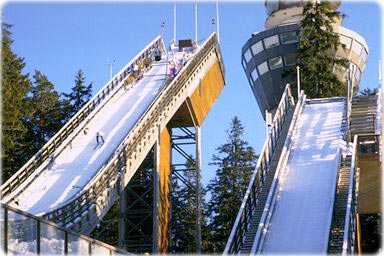
Finland
The Republic of Finland (Suomen tasavalta) is a country in northwestern Europe, bordering the Baltic Sea, Gulf of Bothnia, and Gulf of Finland, between Sweden and Russia. Finland is one of Europe’s most northerly countries, with about one-third of its area lying north of the Arctic Circle. Finland has a highly industrialized, largely free-market economy. The capital is Helsinki.
The earliest traces of human habitation in Finland date from about 8000 BC. The Battle-Ax culture (1800-1600 BC) may have been brought to Finland by an Indo-European. These people were able navigators and also introduced agriculture. A merger of the Battle-Ax people and the previous dwellers resulted in the so-called Kiukainen culture (1600-1200 BC).
During the age of the Vikings, the Finns became exposed to both eastern and western influences. Vikings from Sweden colonized the Åland Islands in the 6th century as a base for their journeys of pillage and trade into Russia as far south as the Black Sea. At the end of the 11th century, Finnish tribes had spread as far north as the 62nd parallel. From the 12th to the 19th centuries, Finland was a province and then a grand duchy under Sweden. After 1809, it was an autonomous grand duchy of Russia. In 1917, Finland attained independence and joined the European Union in 1995.


The Railway Square in Helsinki, with the Finnish National Theatre, in the background, and the statue of the writer Aleksis Kivi at the center of the square.
Geography
Administrative divisions: 6 provinces (laanit, singular - laani); Aland, Etela-Suomen Laani, Ita-Suomen Laani, Lansi-Suomen Laani, Lappi, Oulun Laani.
Terrain: mostly low, flat to rolling plains interspersed with lakes and low hills. Highest point: Halti 1,328 m.
Total area: 337,030 km². Coastline: 1,126 km (excludes islands and coastal indentations).
Climate: cold temperate; potentially subarctic but comparatively mild because of moderating influence of the North Atlantic Current, Baltic Sea, and more than 60,000 lakes. Because of the climate, agricultural development is limited to maintaining self-sufficiency in basic products.
Ports and harbors: Hamina, Helsinki, Kokkola, Kotka, Loviisa, Oulu, Pori, Rauma, Turku, Uusikaupunki, Varkaus.
People
Population: 5,5 million (2018 est.), concentrated on small southwestern coastal plain.
Religions: Lutheran 70.9%, Greek Orthodox 1.1%, other 1.7%, unspecified 26.3% (2017 est.).
Ethnic groups: Finn, Swede, Russian, Estonian, Romani, Sami.
Language: Finnish (official) 87.9%, Swedish (official) 5.2%, Russian 1.4%, other 5.5% (2017 est.).
Main source: CIA - The World Factbook.
◄ Europe |
Lutheran Cathedral, Senate Square, Helsinki.
Ski jumps with observation tower, in Kuopio, Finland.

|
Copyright © Geographic Guide - Travel European Continent. |
Finland
